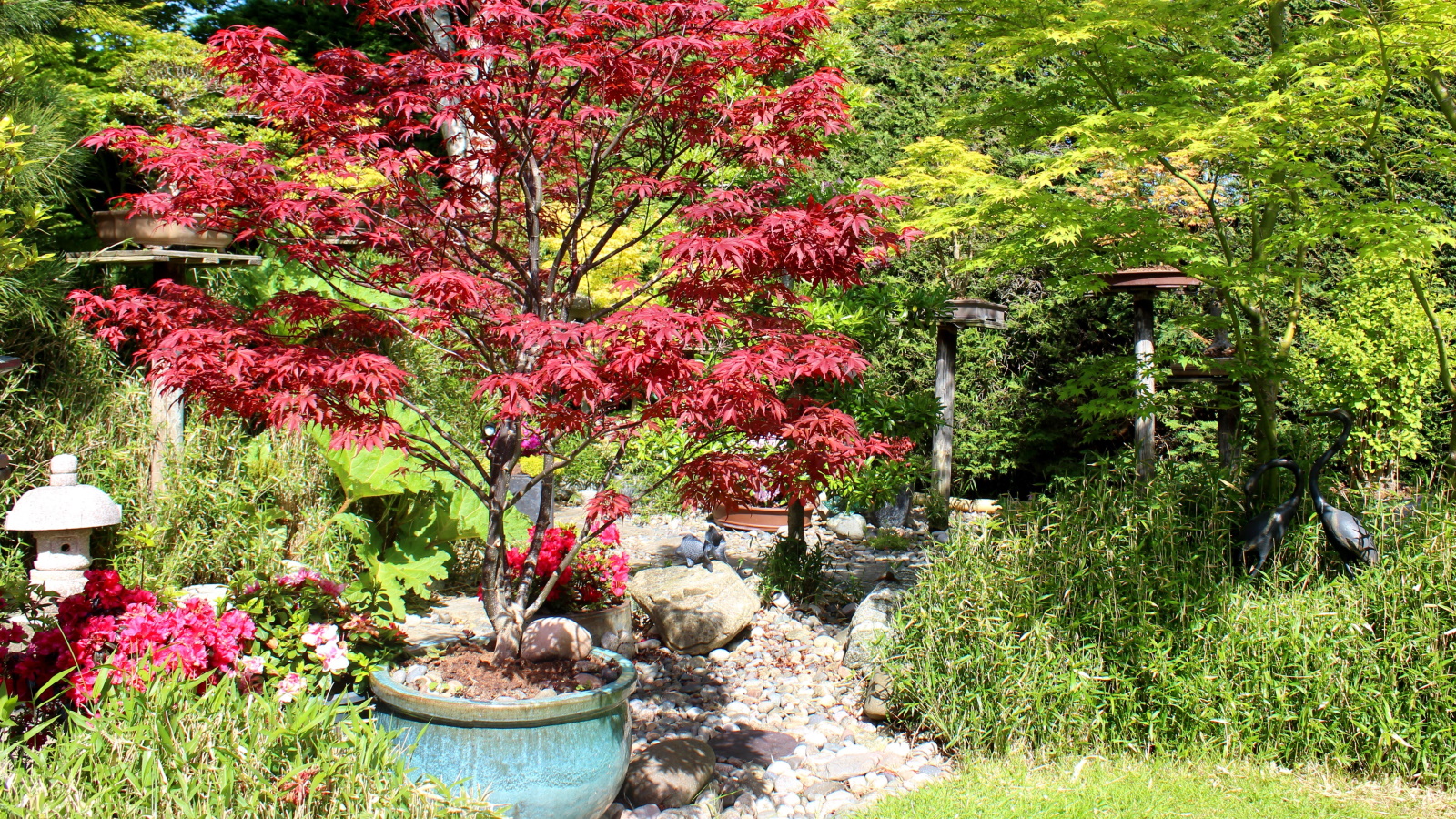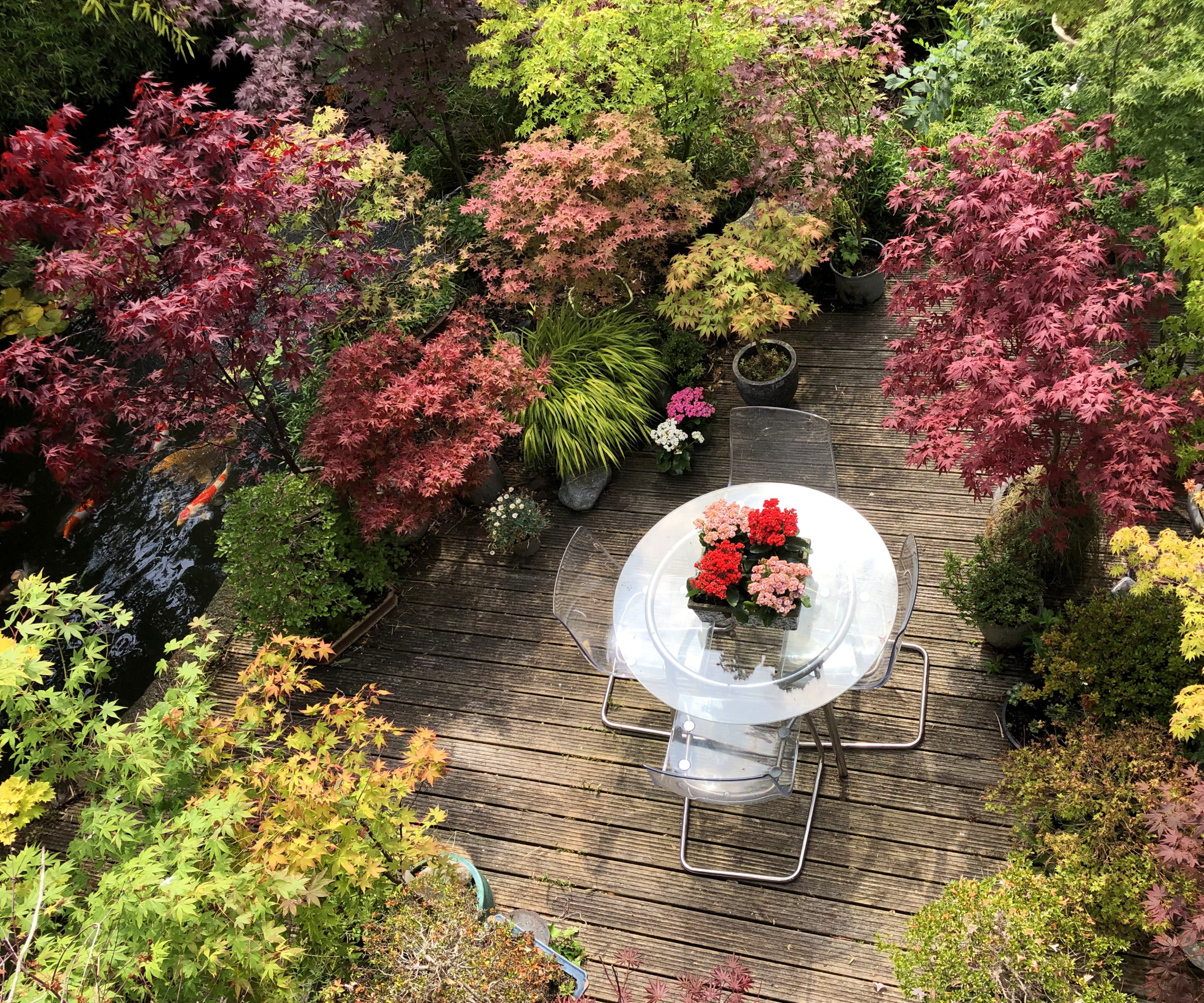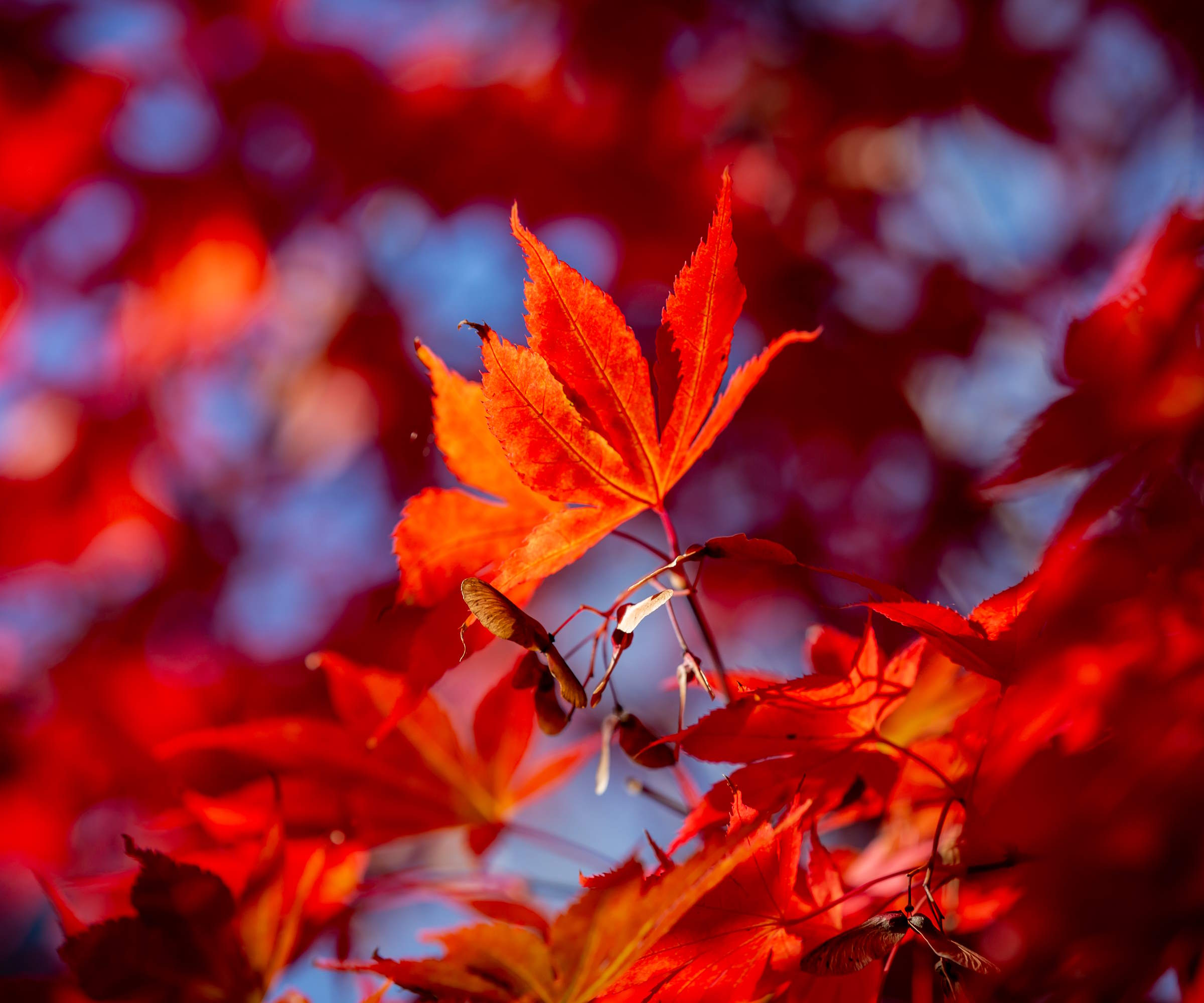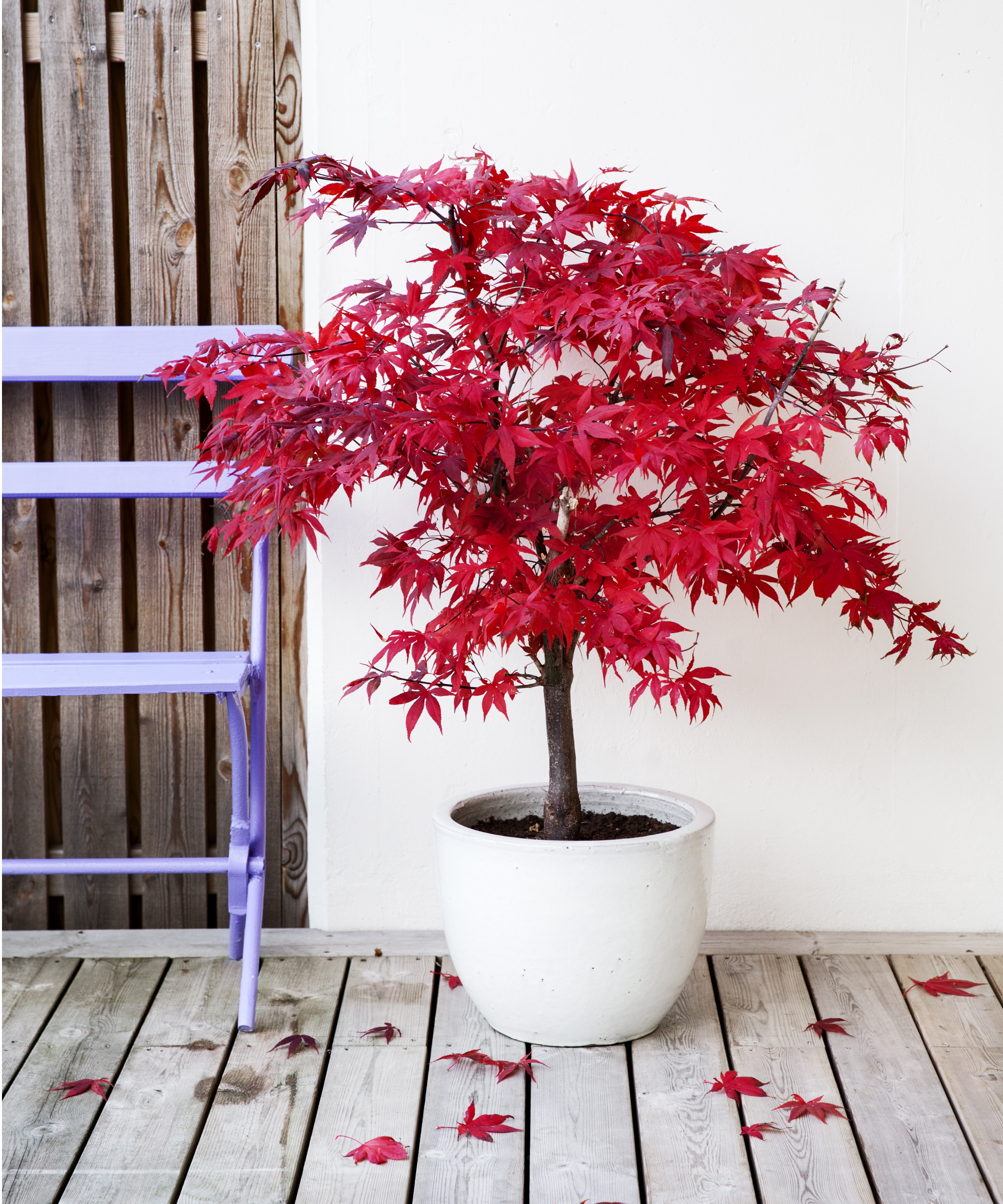
Learning how to grow Japanese maples in pots is a great way to add impact, height and structure to your container displays. Whether you have a large yard, tiny terrace or micro patio, growing Japanese maple trees in pots will incorporate a feeling of the forest into your outside space, whatever the size.
When considering how to grow these popular trees, most are hardy from US hardiness zone 5, tolerating winter freezes down to -20°F/-29°C. It is important to remember, however, that Japanese maples do best in woodland-like settings, and while that might be hard to emulate on a balcony or patio, there are things you can do to help your pot-grown tree thrive.
So, whether you are a Japanese Maple pro or you’re looking to plant your first, this guide has all the information you need to grow these unique trees in pots. I spoke to one expert gardener from the South Coast Botanic Garden, California, to discuss how best to approach container growing.

How to grow Japanese maples in pots
Japanese maples are often considered some of the best trees for small gardens. These compact specimens are typically small to medium-sized, and while their spread will depend on the variety you grow, they will not usually extend beyond 15 to 30 feet in height and width. However, when grown in a pot, their size will be limited due to their roots being restricted, making an attractive specimen tree at a size that suits you.
Growing advice for Japanese maples in pots

Japanese maples are some of the best trees to grow in pots, and by following a few simple steps, you can ensure that your tree thrives.
'Japanese maples make wonderful specimens in containers, especially dwarf varieties as they are better suited for long-term container culture,' says Terry Huang, plant expert and Director of Living Collections at South Coast Botanic Garden in the Los Angeles area.
Native to Japan and China, these trees are typically found in woodland areas where their roots can spread and search for nutrients, so it is important to use as big a pot as you can accommodate. 'Specimens are happiest in large pots that are 15 gallons or bigger,' Terry adds. There are many attractive large pots available online, such as these rounded, fiberglass pots from Walmart.
Before filling your pot with soil, find the best place on your terrace or yard for the tree to grow. In my experience, somewhere with a few hours of morning sun and then afternoon shade is preferable. 'Japanese maples can struggle in exposed situations, so avoid a sunny corner that is hot and dry' Terry says.
'Use high-quality potting soil for pots,' Terry continues, 'wood-based mixes are ideal, and blend in a little topsoil at a 1:2 or 1:3 ratio. This will help with micronutrients and water retention.' Organic potting soil is available to buy from Walmart.
'It is a good idea to fertilize your Japanese maple trees 1 to 2 times per year,' Terry says. 'This is best done during the spring and summer.' Remember that any pot-grown trees will be reliant on you for all their water and feed, so it is important to remember this crucial job as part of your summer gardening checklist.
Consider using fertilizer tree spikes, available from Amazon, which are an easy option requiring minimal effort. Simply place the spike in the pot, and nutrients will slowly be released when watering over the next 3 months.
Finally, pruning is an important part of maintaining a container-grown Japanese maple tree. Pruning is a job for the winter when the tree is in dormancy, as any cuts will not cause damage or stress to your tree. Remove any diseased or dead branches, then prune to keep a compact, healthy shape. Japanese maples typically look best when kept to a domed, almost weeping silhouette.
Shop tree accessories
These sculptural pots are perfect as a standalone statement piece. Made from fiberglass, they are lighter in weight yet ultra-durable.
These easy to use fertilizer spikes are ideal for use with any trees and shrubs, helping to provide all the nutrients they need.
Acer Palmatum 'Bloodgood' is a popular Japanese maple with striking red foliage. This variety is well suited to pot growing.
Recommended Japanese maple trees for pots

There are many different Japanese maple varieties, but choosing a smaller - or dwarf - variety is recommended when growing in pots.
'One unique option is Acer shirasawanum ‘Aureum’ sometimes called the full moon maple due to its rounded leaves, which is a nice contrast to all the varieties with deep lobes,' Terry says. 'This form has lovely chartreuse leaves delicately edged in red, that turn orange in the fall.' At maturity, this smaller variety will reach no more than 10 to 15 feet tall. Full moon maple starter plants are available to buy from Amazon.
Terry also recommends Acer palmatum 'Crimson Queen', for its 'classic weeping form with feathery, plum foliage that shifts to crimson and red in the fall.' At maturity, this dwarf variety will reach no bigger than 10 feet tall, and when grown in a pot, you can easily maintain a smaller form. Acer palmatum 'Crimson Queen' is available to buy from Amazon.
FAQs
How often should you repot a Japanese maple tree?
Japanese maple trees tend to be slow-growing, so repotting will not be a frequent job. However, moving your tree to a slightly larger container every three years is a good idea, helping to maintain growth and tree health. This is best done in early spring or late summer, but avoid repotting when temperatures are cold or hot. It is best to do this during a mild week, to avoid stressing the tree.
Growing Japanese maple trees in pots is an ideal option for gardeners with smaller spaces. These spectacular trees will add interest to any yard, providing a foliage backdrop in spring and summer, before taking center stage in the fall as leaves change color. For more information on container growing for shrubs and trees, see our guide to growing flowering dogwood trees in pots.







